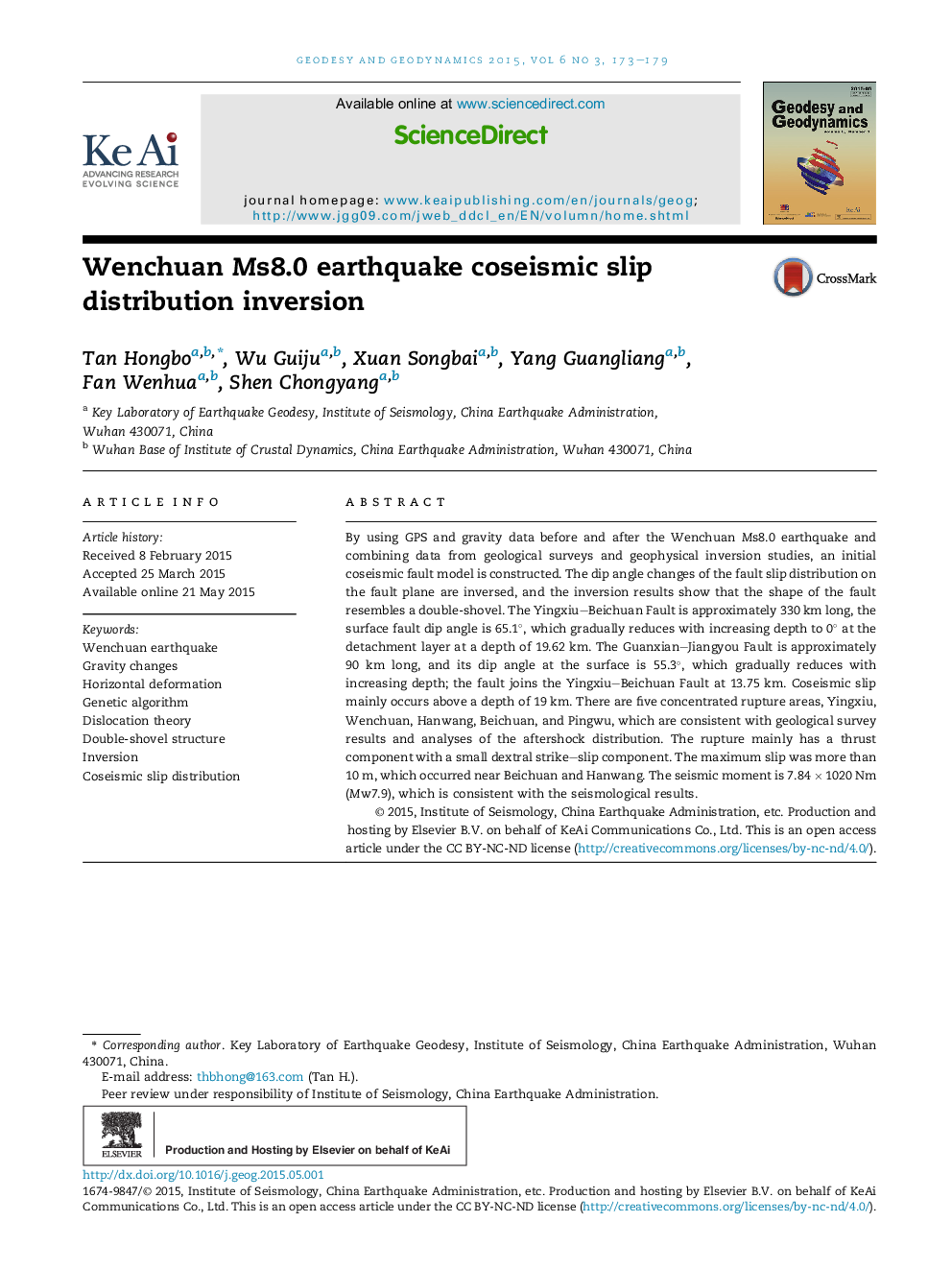| Article ID | Journal | Published Year | Pages | File Type |
|---|---|---|---|---|
| 4683643 | Geodesy and Geodynamics | 2015 | 7 Pages |
By using GPS and gravity data before and after the Wenchuan Ms8.0 earthquake and combining data from geological surveys and geophysical inversion studies, an initial coseismic fault model is constructed. The dip angle changes of the fault slip distribution on the fault plane are inversed, and the inversion results show that the shape of the fault resembles a double-shovel. The Yingxiu–Beichuan Fault is approximately 330 km long, the surface fault dip angle is 65.1°, which gradually reduces with increasing depth to 0° at the detachment layer at a depth of 19.62 km. The Guanxian–Jiangyou Fault is approximately 90 km long, and its dip angle at the surface is 55.3°, which gradually reduces with increasing depth; the fault joins the Yingxiu–Beichuan Fault at 13.75 km. Coseismic slip mainly occurs above a depth of 19 km. There are five concentrated rupture areas, Yingxiu, Wenchuan, Hanwang, Beichuan, and Pingwu, which are consistent with geological survey results and analyses of the aftershock distribution. The rupture mainly has a thrust component with a small dextral strike–slip component. The maximum slip was more than 10 m, which occurred near Beichuan and Hanwang. The seismic moment is 7.84 × 1020 Nm (Mw7.9), which is consistent with the seismological results.
